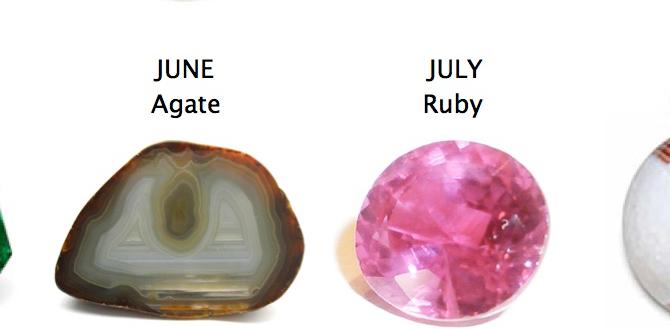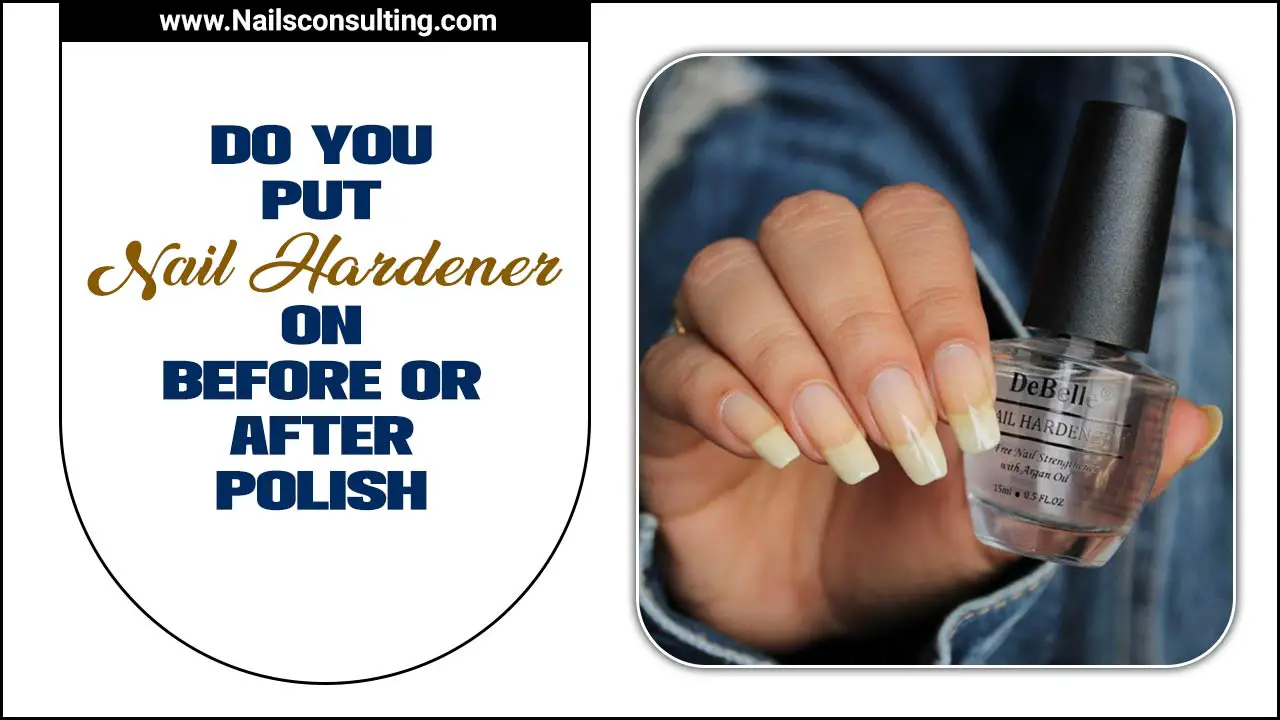Want to create stunning, high-end nail looks at home? This guide breaks down luxury nail designs step by step, showing beginners how to achieve effortless masterpieces with simple techniques and everyday tools. Get ready to elevate your manicure game and express your unique style with confidence!
Dreaming of nails that look like they just stepped out of a high-fashion magazine? You know the kind – chic, sophisticated, and utterly glamorous. But maybe the thought of recreating those intricate designs at home feels a little… intimidating? You’re not alone! Many of us see stunning nail art and think, “That’s for the pros.” The good news is, achieving a touch of everyday luxury for your fingertips is totally achievable, even if you’re just starting out. With a few simple tricks and a little patience, you can transform your nails into tiny canvases of elegance.
This article is your friendly guide to unlocking the secrets of luxury nail designs. We’ll walk you through easy-to-follow, step-by-step tutorials that simplify even the most impressive-looking styles. Get ready to discover how to create effortless masterpieces that will have you feeling fabulous, all from the comfort of your home. Let’s dive in and make your nail dreams a reality!
Your At-Home Luxury Nail Design Toolkit
Before we dive into the fun designs, let’s make sure you have the right tools. Don’t worry, you don’t need a professional salon’s worth of equipment! A few key items will set you up for success and make creating luxury nail designs a breeze.
Nail Prep Essentials: The Foundation of Fabulous
Just like any beautiful creation, great nails start with a solid foundation. Proper prep ensures your polish looks smooth and lasts longer. Here’s what you’ll need:
- Nail Polish Remover: Acetone-based removers are generally best for removing polish quickly and efficiently. Ensure you have a non-negotiable addition to your kit for clean slates.
- Cotton Pads or Balls: For wiping away old polish.
- Nail File: A gentle file (like a glass or fine-grit file) is ideal for shaping without damaging the nail. The American Academy of Dermatology recommends filing in one direction to prevent splitting.
- Cuticle Pusher or Orangewood Stick: To gently push back your cuticles after softening them.
- Nail Buffer: A multi-sided buffer can smooth ridges, add shine, and prepare the nail surface for polish.
- Base Coat: This is crucial! It protects your natural nail from staining and helps your polish adhere better.
- Top Coat: The finishing touch that seals your design, adds shine, and prevents chips. A high-shine, quick-dry top coat is a lifesaver!
Design Tools: Where the Magic Happens
These tools will help you bring your luxury visions to life:
- Nail Polish in Your Chosen Colors: Think classic neutrals, deep jewel tones, elegant metallics, and of course, crisp white and classic black.
- Thin Nail Art Brushes: You don’t need many! A fine-liner brush for delicate lines and a small dotting tool are perfect starters.
- Dotting Tools: These come with various-sized balls at the ends, perfect for creating dots, small flowers, or abstract patterns.
- Striping Tape (Optional): Thin adhesive tape that can be used to create sharp geometric lines.
- Stencils (Optional): For quick, repeatable designs.
Beginner-Friendly Luxury Nail Designs: Step-by-Step
Let’s get creative! These designs are chosen for their elegant look and beginner-friendly execution. Remember, practice makes perfect, and the most important thing is to have fun!
Design 1: The Classic French Ombré
The French manicure gets a modern, luxurious update with the soft transition of ombré. It’s chic, sophisticated, and surprisingly easy to achieve.
What You’ll Need:
- Base Coat
- Sheer Pink or Nude Polish
- White or Soft Cream Polish
- Cosmetic Sponge (a regular kitchen sponge cut into small pieces works too!)
- Top Coat
Steps:
- Prep Your Nails: Start with clean, filed nails. Apply a thin layer of base coat and let it dry completely.
- Apply the Base Color: Paint one or two thin coats of your sheer pink or nude polish. Let it dry thoroughly. This creates a soft, natural-looking base.
- Create the Ombré Effect:
- Take your cosmetic sponge and apply a stripe of your white or cream polish directly onto the sponge.
- Next to that, apply a stripe of your sheer pink or nude polish.
- Quickly and gently dab the sponge onto the tip of your nail, concentrating the color transition where you want your French tip to begin. You might need to dab a couple of times, layering softly, to get the desired gradient.
- Don’t worry if it’s not perfect! It’s meant to be a soft blend.
- Clean Up Edges: Use a small brush dipped in nail polish remover to clean up any polish that got onto your skin. This makes the design look extra neat.
- Apply Top Coat: Once the ombré is dry, seal your masterpiece with a generous layer of top coat for shine and protection.
Design 2: Elegant Gold Foil Accents
Adding a touch of metallic foil can instantly elevate any nail color to a luxurious status. It’s minimalist but makes a big statement.
What You’ll Need:
- Base Coat
- Your chosen polish color (e.g., deep navy, classic black, rich burgundy, neutral taupe)
- Gold Foil Adhesive (specialized or even a thin layer of clear polish can work in a pinch, but adhesive is best)
- Gold Cosmetic Foil Flakes or Sheets
- Tweezers (optional, for placement)
- Top Coat
Steps:
- Prep and Base: Apply base coat and then 1-2 coats of your chosen nail polish color. Let it dry completely.
- Apply Adhesive: Paint a thin, strategic line or shape with your foil adhesive where you want the gold accent. This could be a thin line at the base of the nail, a diagonal stripe, or just a small detail near the cuticle. Alternatively, apply a thin layer of regular polish and let it become tacky (not fully dry).
- Transfer the Foil:
- If using specialized foil adhesive, follow the product’s instructions (usually involves pressing the foil onto the tacky adhesive).
- If using the tacky polish method, place a piece of foil (colored side up) over the tacky polish and rub gently.
- Peel away the backing paper (or the foil sheet if you used a full sheet). The metallic color should transfer onto your nail.
- You can use tweezers to carefully place small flakes for a more controlled look.
- Seal the Deal: Once the foil is in place and any adhesive is dry, apply a generous top coat. Be careful not to drag the foil when applying the top coat – a smooth, firm swipe is best.
Design 3: Sophisticated Polka Dots with a Twist
Polka dots are playful, but with the right color palette and strategic placement, they can look incredibly sophisticated and luxurious.
What You’ll Need:
- Base Coat
- A sophisticated base polish (e.g., deep emerald green, sophisticated grey, soft blush)
- A contrasting metallic or white polish for the dots
- Dotting Tools (various sizes)
- Top Coat
Steps:
- Prep and Paint: Apply base coat, then 1-2 coats of your chosen sophisticated base polish. Let it dry completely.
- Choose Your Dotting Tool: Select a dotting tool size that creates a dot you like. For a more refined look, consider slightly larger dots spaced subtly, or smaller dots forming a pattern.
- Create the Dots: Dip your dotting tool into the contrasting polish. Gently press the dotting tool onto your nail to create a perfect dot. Work from one side of the nail to the other.
- Option A (Classic): Create a few evenly spaced dots along the free edge of the nail, mimicking a French tip.
- Option B (Diagonal Sweep): Create a diagonal line of dots across the nail.
- Option C (Accent Nail): Place dots only on one or two accent nails for a subtle touch.
- Clean Up: Use a small brush and remover to neaten any stray dots or smudges.
- Top Coat Power: Finish with a good quality top coat to lock in your elegant dots.
Design 4: The Subtle Marble Effect
Marble is the epitome of luxury and sophistication. This technique might look complex, but it’s quite forgiving and can be simplified for beginners.
What You’ll Need:
- Base Coat
- A light neutral polish (white, off-white, pale grey)
- A contrasting polish for the veins (black, dark grey, deep navy, or even a metallic gold)
- A thin nail art brush or toothpick
- Water (for a water marble effect, optional) OR a clear top coat/nail polish for a simpler dry marble.
- Top Coat
Option A: Simplified Dry Marble (Easier for Beginners)
- Prep and Base: Apply base coat and 1-2 coats of your light neutral polish. Let dry completely.
- Create Veins: Take your contrasting polish and, using a very thin brush or toothpick, draw thin, irregular lines resembling marble veins onto the dried base color. Don’t make them too uniform; marble is naturally organic. Vary the thickness slightly.
- Blend (Optional): You can gently feather the edges of the lines with a clean brush or toothpick while the polish is still wet.
- Apply Top Coat: Once the veins are dry, seal with a top coat.
Option B: Water Marble (More Technique Involved)
- Prep: Apply base coat and 1-2 coats of your light neutral polish to your nails and let them dry completely. You can also apply a thick layer of petroleum jelly around your cuticles to protect your skin.
- Water Setup: Fill a small cup with room temperature water.
- Create the Marble:
- Drop a few drops of your contrasting polish onto the surface of the water.
- Follow immediately with drops of your base color polish, or other contrasting colors.
- Use a toothpick to gently swirl the colors together, creating a marble pattern. Don’t over-swirl!
- Transfer to Nail: Dip your nail into the swirling pattern. Press down gently.
- Clean Up: Carefully pull your nail out and immediately use a toothpick or your cleanup brush to remove excess polish from your skin.
- Top Coat: Apply top coat once the polish on your nail is dry.
- Note: Water marbling can be tricky and requires practice. For simpler luxury, the dry marble effect is fantastic!
Design 5: Chic Geometric Lines
Clean, sharp lines are a hallmark of modern luxury. This design uses striping tape or careful freehand work to create a sophisticated look.
What You’ll Need:
- Base Coat
- Your primary polish color (e.g., a metallic, a classic red, a deep plum)
- A contrasting polish color (often white, black, or gold/silver)
- Striping Tape (thin adhesive type) if freehand is daunting
- Sharp Scissors or Nail Art Clippers
- Hema-free top coat (optional but good for sensitive individuals)
- Top Coat
Steps:
- Prep and Base Colors: Apply base coat. Paint 1-2 coats of your primary polish color. Let it dry completely until it’s hard to the touch.
- Apply Striping Tape:
- Carefully place thin strips of the adhesive tape onto your nail to create the desired geometric pattern – think intersecting lines, triangles, or sharp angles.
- Press the tape down firmly to ensure a clean seal and prevent polish from seeping underneath.
- Paint Over the Tape: Apply 1-2 thin coats of your contrasting polish over the striping tape. Make sure to cover the areas where you want the lines.
- The Crucial Peel: While the contrasting polish is still WET (this is key for a clean line!), carefully peel off the striping tape using tweezers or your fingernail. If you wait for it to dry, you risk pulling off the polish beneath.
- Touch Up (If Needed): If any polish seeped under the tape, use a fine brush dipped in polish remover to carefully clean the edges.
- Top Coat: Once everything is dry, apply your top coat to seal the design and add shine.
Tip: For a truly seamless look, consider using nail wraps with pre-designed geometric patterns. Many brands offer stunning options that provide a professional finish with zero application fuss.
Maintaining Your Luxury Manicure
Achieving these beautiful designs is only half the battle! Keeping them looking fresh and flawless is key to enjoying your luxury nails.
- Apply Top Coat Regularly: A quick touch-up with top coat every 2-3 days can refresh the shine and add an extra layer of protection against chips.
- Wear Gloves: When doing household chores, especially those involving water or harsh chemicals, wear rubber gloves. This is one of the most effective ways to protect your manicure.
- Moisturize: Keep your cuticles and hands hydrated with a good hand cream or cuticle oil. Healthy cuticles make even simple polish look more polished.
- Avoid Using Nails as Tools: Resist the urge to pry, scrape, or pick with your nails. This is the fastest way to cause chips and damage.
- Be Gentle: Treat your nails with care. Minor bumps and scrapes can happen, but being mindful can prolong the life of your design.
Understanding Nail Strengths and Weaknesses
Every nail type has its own characteristics. Knowing yours can help you select designs and care routines that work best for you. Here’s a quick look at common nail types and how they relate to nail art.
| Nail Type | Characteristics | Best For Luxury Designs | Care Considerations |
|---|---|---|---|
| Brittle Nails | Prone to breaking, chipping, and splitting. Can be caused by dryness, frequent exposure to water, or harsh chemicals. | Designs that don’t involve extensive layering which can add weight. Focus on polish color and simple accents. Avoid heavy 3D embellishments. | Moisturize regularly with rich creams and oils. Use a good base coat. Avoid acetone polish removers if possible; opt for non-acetone. Protect hands with gloves. |
| Soft/Peeling Nails | Nails that bend easily and can peel or laminate in layers. Often indicates a lack of moisture or vitamin deficiency. | Similar to brittle nails, avoid designs that add stress. Smooth finishes and single accent nails work well. | Stay hydrated. Consider a nail hardener (use sparingly as overuse can make them brittle). Avoid prolonged water exposure. |
| Strong/Healthy Nails | Resilient, not easily bent or broken, and grow at a steady rate. Usually have a good natural moisture balance. | Can handle most designs, including layering, simple 3D elements, and even some light embellishments. | Maintain by keeping them clean and moisturized. Regular filing and buffing are beneficial. |
| Ridged Nails | Have horizontal or vertical lines (ridges) on the nail surface. Vertical ridges are common with age, while horizontal can indicate past trauma or illness. | A good buffing before applying base coat can smooth ridges. Simple, glossy finishes and clean lines work best. Intricate matte finishes might highlight ridges. | Use a ridge-filling base coat. Hydration is key. Gentle buffing can help smooth surface imperfections. |
Understanding your nail type, as recommended by dermatologists, can significantly impact the longevity and appearance of your luxury nail designs. For instance, incorporating strength-boosting base coats or specialized treatments can make a world of difference.
Troubleshooting Common Nail Design Issues
Even the best intentions can sometimes lead to minor mishaps. Here are some



